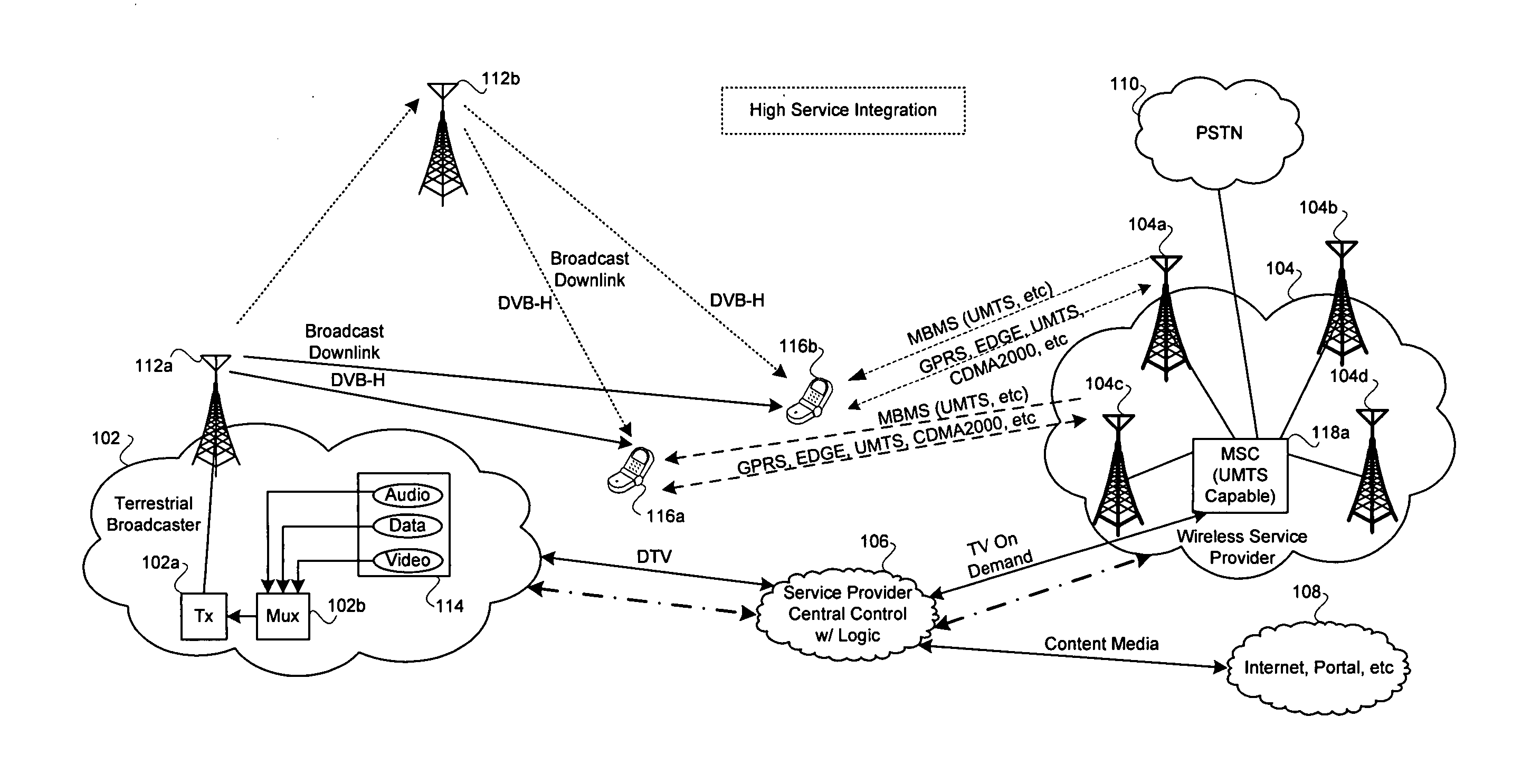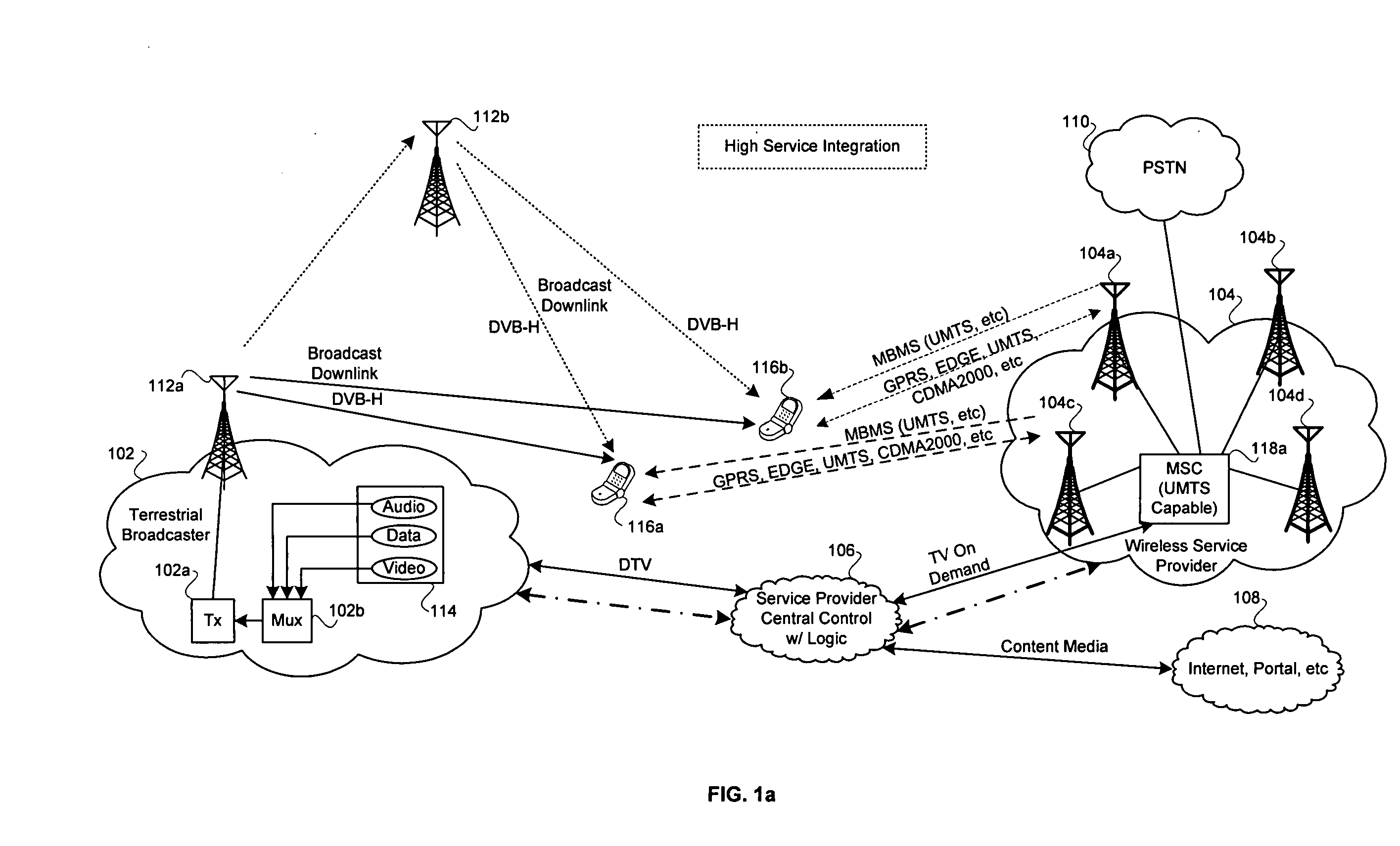Method and system for mobile receiver antenna architecture for European cellular and broadcasting services
a mobile receiver and antenna technology, applied in the field of mobile receivers, can solve the problems of inter-symbol interference in received signals, high bit rate data transmission, and significant challenges in deploying broadcast services to mobile user equipment, and achieve the effect of low noise amplifier
- Summary
- Abstract
- Description
- Claims
- Application Information
AI Technical Summary
Benefits of technology
Problems solved by technology
Method used
Image
Examples
Embodiment Construction
[0056] A method for an antenna architecture that handles European band cellular and broadcast channels may be provided. The method may comprise receiving at a first radio frequency integrated circuit (RFIC) integrated within a mobile terminal, first signals via a first antenna, where the first signals comprise signals within a 2100 MHz band. The method may further comprise receiving at a second RFIC integrated within the mobile terminal, second signals via the first antenna, where the second signals comprise signals within at least one of a 1800 MHz band and a 900 MHz band and receiving at a third RFIC integrated within the mobile terminal, third signals via the first antenna, where the third signals comprise signals within a VHF / UHF broadcast band.
[0057]FIG. 1a is a block diagram of an exemplary system for providing integrated services between a cellular network and a digital video broadcast network, in accordance with an embodiment of the invention. Referring to FIG. 1a, there is...
PUM
 Login to View More
Login to View More Abstract
Description
Claims
Application Information
 Login to View More
Login to View More - R&D
- Intellectual Property
- Life Sciences
- Materials
- Tech Scout
- Unparalleled Data Quality
- Higher Quality Content
- 60% Fewer Hallucinations
Browse by: Latest US Patents, China's latest patents, Technical Efficacy Thesaurus, Application Domain, Technology Topic, Popular Technical Reports.
© 2025 PatSnap. All rights reserved.Legal|Privacy policy|Modern Slavery Act Transparency Statement|Sitemap|About US| Contact US: help@patsnap.com



